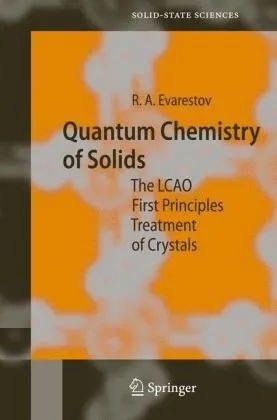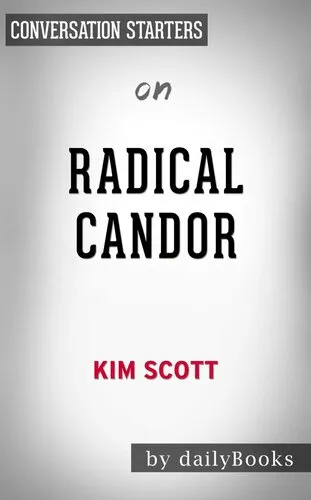Quantum chemistry of solids: the LCAO first principles treatment of crystals
4.3
Reviews from our users

You Can Ask your questions from this book's AI after Login
Each download or ask from book AI costs 2 points. To earn more free points, please visit the Points Guide Page and complete some valuable actions.Related Refrences:
Introduction to 'Quantum Chemistry of Solids'
Quantum chemistry has always been a cornerstone for understanding the intricacies of the molecular and solid-state systems. 'Quantum chemistry of solids: the LCAO first principles treatment of crystals' provides an exhaustive examination of the quantum chemical treatment of crystal structures using the Linear Combination of Atomic Orbitals (LCAO) approach. Authored by Robert A. Evarestov, this book serves as a comprehensive guide to tackling the complex interplay between quantum mechanics and solid-state chemistry.
Detailed Summary of the Book
The book delves into the theoretical grounding of quantum chemistry, specifically focusing on its application to solid-state systems. The LCAO approach has been effectively harnessed to elucidate the structural and electronic properties of crystals. Evarestov meticulously outlines both the mathematical formulations and computational algorithms essential for simulating crystal behaviors at the quantum level.
The initial chapters lay a foundational understanding of quantum mechanical principles as they relate to crystal lattice structures. Readers are then introduced to the LCAO method, which combines atomic orbitals linearly to describe more complex molecular orbitals. This approach is pivotal for solving the Schrödinger equation in periodic systems, thus enabling precise predictions about electronic structures.
Subsequent sections delve into practical applications, exploring how these foundational theories can be implemented through computational modeling. Evarestov provides detailed examples and case studies, detailing how modern quantum chemistry can predict physical properties such as electrical conductivity, optical characteristics, and magnetic behavior of solids.
Key Takeaways
- The LCAO method provides a robust framework for understanding crystal structures and their electronic properties.
- Quantum chemical principles can be directly applied to predict material characteristics, enhancing advancements in material science.
- The book fosters a detailed understanding of computational methodologies in quantum chemistry, bridging theoretical concepts with practical applications.
- Programming and algorithmic strategies discussed in the book are essential for effectively using quantum chemical simulations in research.
- A comprehensive showcase of case studies illustrating successful applications of quantum chemistry in real-world scenarios.
Famous Quotes from the Book
"The foundation of understanding the universe at the microscopic level lies in the ability to describe and predict the behavior of solid-state materials using quantum mechanics."
"The LCAO method remains a timeless and invaluable approach in unraveling the mysteries of crystallography, marrying the abstract world of theoretical chemistry with tangible technological advancements."
Why This Book Matters
'Quantum chemistry of solids: the LCAO first principles treatment of crystals' stands as a pivotal resource for physicists, chemists, and material scientists aiming to deepen their understanding of solid-state chemistry. This book is not just a collection of theories but a rigorous exploration of how these theories translate into practical applications that can transform industries ranging from electronics to energy storage.
By providing both the theoretical underpinnings and tangible computational techniques, Evarestov's work offers invaluable insights into the future of material design and innovation. As technology rapidly advances, the need for new materials with specific properties becomes more pronounced. This book equips researchers with the necessary tools to meet such demands, driving progress in sustainable technologies and smart materials.
Furthermore, it bridges the gap between academic study and practical application, making it an essential guide for both seasoned researchers and students stepping into the dynamic field of quantum chemistry.
Free Direct Download
You Can Download this book after Login
Accessing books through legal platforms and public libraries not only supports the rights of authors and publishers but also contributes to the sustainability of reading culture. Before downloading, please take a moment to consider these options.
Find this book on other platforms:
WorldCat helps you find books in libraries worldwide.
See ratings, reviews, and discussions on Goodreads.
Find and buy rare or used books on AbeBooks.
1372
بازدید4.3
امتیاز50
نظر98%
رضایتReviews:
4.3
Based on 0 users review
"کیفیت چاپ عالی بود، خیلی راضیام"
Questions & Answers
Ask questions about this book or help others by answering
No questions yet. Be the first to ask!



